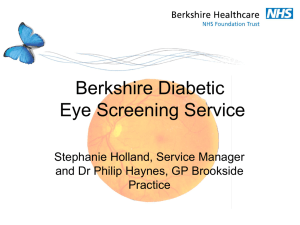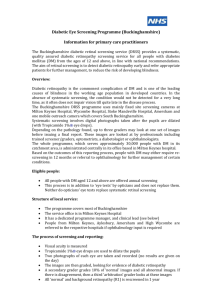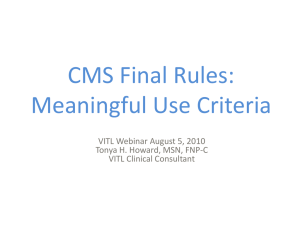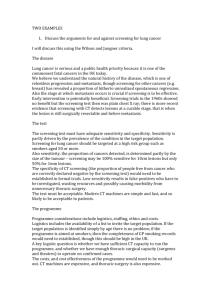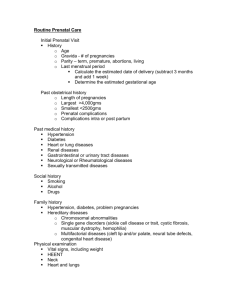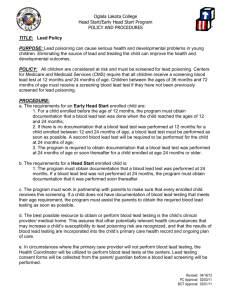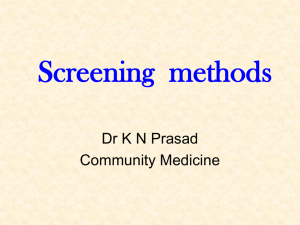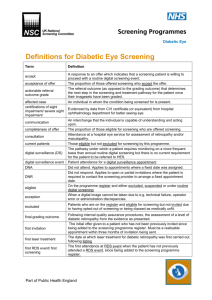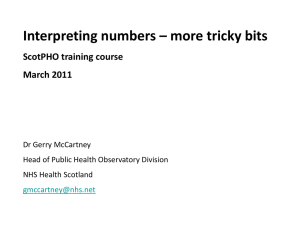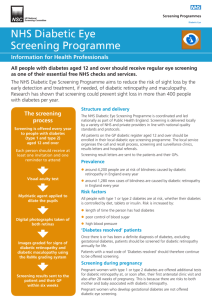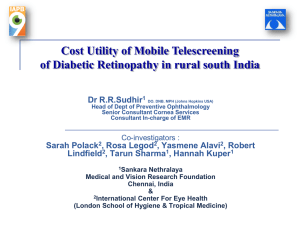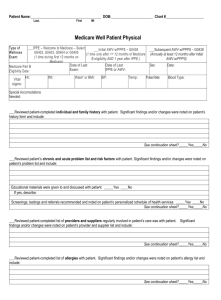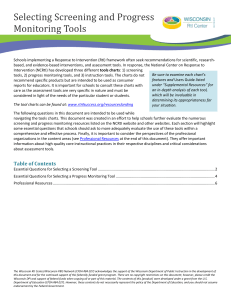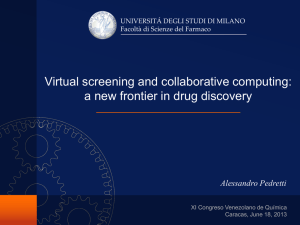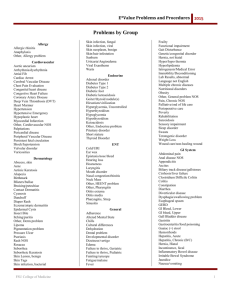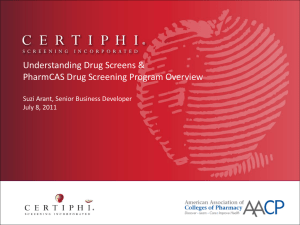Diabetic Retinopathy Screening Programme
advertisement
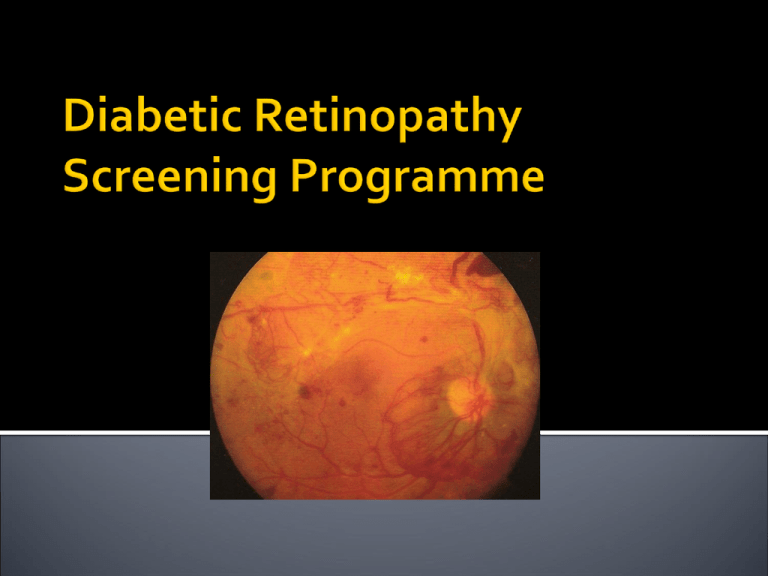
66,000 adults & children in NI with diabetes Estimates of ca 12,500 people who are as yet unaware that they have the condition Damage to small blood vessels Vessels may become blocked or leaky New vessels may grow, and these may bleed easily Major cause of blindness in working population Condition should be an important health problem Should be treatable Facilities for diagnosis and Tx should be available Test should be acceptable to population Natural history of the disease should be understood Should be an agreed policy on who to treat Case finding should be continuous Total cost of finding a disease should be balanced in relation to medical expenditure as a whole “Screening is the process of identifying those individuals at a signifigantly high risk of a specific disorder to warrant further investigation or direct action” ...”is normally asymptomatic , usually medically initiated and not requested by the patient...” Sensitivity: proportion of people WITH the disorder who test positive on a screening test Specificity: proportion of people who do NOT have the disorder who test negative... Northern Ireland Context Priorities for Action By 2007, Boards & Trusts expected to have in place a programme of diabetic retinopathy screening to cover the whole of Northern Ireland To reduce visual morbidity caused by diabetic retinopathy by facilitating early diagnosis & treatment of sight-threatening retinopathy through population screening... Annual retinal screening should be offered to all eligible individuals with diabetes Screening should be carried out by digital retinal photography Those identified as having potentially sightthreatening should have rapid access to specialist assessment & treatment Screening is a programme to reduce the risk of disease It is not a guarantee of diagnosis or cure It includes: Identification of the population to be screened Public & professional awareness Written information Training of health professionals Offer & application of screening test Appropriate follow-up of positive screens Feedback Standards & QA Most patients with diabetes are eligible for screening, apart from... <12 years old Informed choice to opt out NPL in either eye Are registered blind or PS due to diabetes Are terminally ill or to infirm to participate Physical or mental disability Currently under the care of ophthalmologist for DR CAPTURE OF DIGITAL IMAGES Although the model of delivery varies by geographical location, all operate to agreed Regional QA Standards & are subject to performance monitoring There is a regional Call/Recall system for primary care practices for the screening programme. DRSS initiates contact & offers GP practices screening visits on a rolling cycle. Within this cycle, screening is offered according to clinical risk criteria. Two or more photographs are taken of the back of the eye Images are assigned & digitally stored Transferred to DRSS offices for interpretation, analysis & information sharing. Images & details are stored for at least 8 years This is useful to track changes over time & also to monitor the quality of the screening programme. If DR is detected, referral to eye clinic for further assessment is indicated. Otherwise, screening is invited again in 12/12 Demographics Epidemiology Resources Maintenance of competencies Thank You Information sharing...
